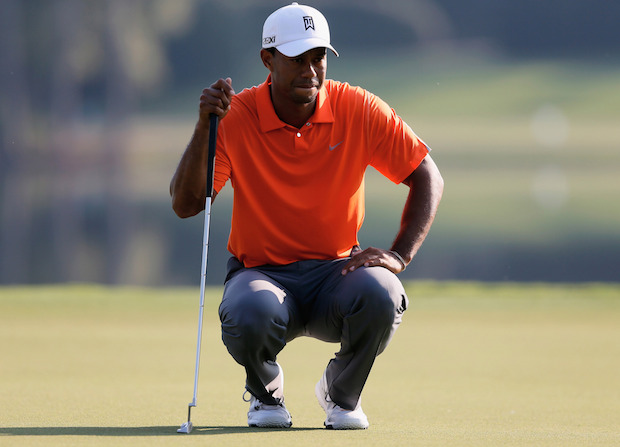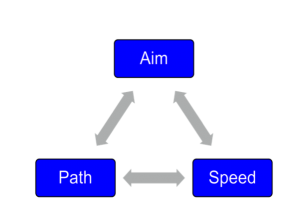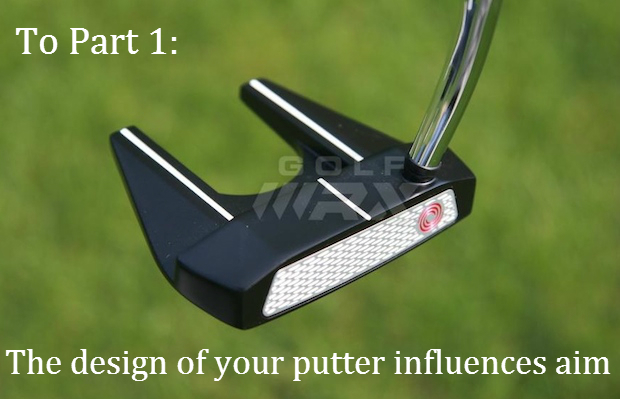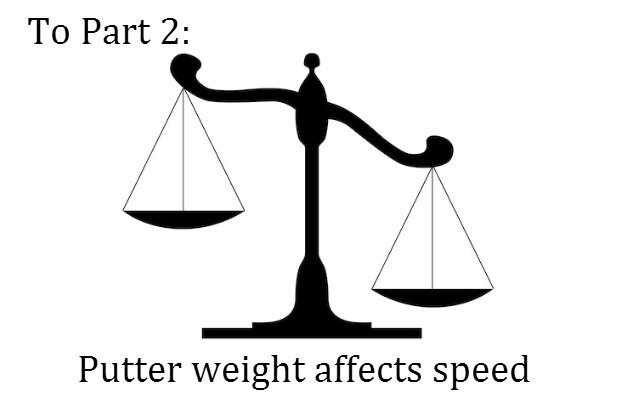Instruction
Stetina: The Ultimate Putting Program

Putting is probably the easiest part of the game, and yet so many people struggle immensely with it. You don’t have to be strong, or in any way physically gifted to be a good putter. You simply have to roll a golf ball on your intended line, as far as the hole. Francis Ouimet’s caddie, Eddie Lowery, had great advice for his player in the movie, The Greatest Game Ever Played, when he told Francis to, “Read it, roll it, and hole it.”
Now I am not sure if this is a factual quote or simply a Hollywood add-on, but nevertheless, this saying offers great simplicity as to what is truly required to putt well. Before you can trust yourself and completely let go, as Eddie Lowery suggests, there are a few things that you need to understand.
Putting comes down to finding balance to the equation that David Edel calls, “The Putting Triad,” which consists of aim, speed, and path. These variables are equal to one another, so when one of them is flawed you have to compensate with another variable for your ball to go in the hole.

Depending on your skill level and the amount that you practice, you can become partially proficient at some form of compensation. Most touring professional don’t aim correctly or have proper speed control, and yet they seem to perform just fine. But they practice endlessly, something that I doubt you do.
Putting accounts for nearly half of a golfer’s score, decides almost every match and for most golfers is undervalued in the improvement process. In this series of articles, I am going to provide insight into a putting model that will allow you to understand the three basic fundamentals of putting; aim, speed, and path. I will also clarify two types of putting strokes and two ways of reading greens. This allows me to blend science with art and offer the ultimate putting program, so that when you’re on the golf course all you have to do is, “Read it, roll it, and hole it.”
To Continue With The Ultimate Putting Program:
- LIKE3
- LEGIT1
- WOW1
- LOL0
- IDHT0
- FLOP0
- OB0
- SHANK0
Instruction
Clement: Laid-off or perfect fade? Across-the-line or perfect draw?

Some call the image on the left laid off, but if you are hitting a fade, this could be a perfect backswing for it! Same for across the line for a draw! Stop racking your brain with perceived mistakes and simply match backswing to shot shape!
- LIKE0
- LEGIT0
- WOW0
- LOL0
- IDHT0
- FLOP0
- OB0
- SHANK1
Instruction
The Wedge Guy: The easiest-to-learn golf basic

My golf learning began with this simple fact – if you don’t have a fundamentally sound hold on the golf club, it is practically impossible for your body to execute a fundamentally sound golf swing. I’m still a big believer that the golf swing is much easier to execute if you begin with the proper hold on the club.
As you might imagine, I come into contact with hundreds of golfers of all skill levels. And it is very rare to see a good player with a bad hold on the golf club. There are some exceptions, for sure, but they are very few and very far between, and they typically have beat so many balls with their poor grip that they’ve found a way to work around it.
The reality of biophysics is that the body moves only in certain ways – and the particulars of the way you hold the golf club can totally prevent a sound swing motion that allows the club to release properly through the impact zone. The wonderful thing is that anyone can learn how to put a fundamentally sound hold on the golf club, and you can practice it anywhere your hands are not otherwise engaged, like watching TV or just sitting and relaxing.
Whether you prefer an overlap, interlock or full-finger (not baseball!) grip on the club, the same fundamentals apply. Here are the major grip faults I see most often, in the order of the frequency:
Mis-aligned hands
By this I mean that the palms of the two hands are not parallel to each other. Too many golfers have a weak left hand and strong right, or vice versa. The easiest way to learn how to hold the club with your palms aligned properly is to grip a plain wooden ruler or yardstick. It forces the hands to align properly and shows you how that feels. If you grip and re-grip a yardstick several times, then grip a club, you’ll see that the learning curve is almost immediate.
The position of the grip in the upper/left hand
I also observe many golfers who have the butt of the grip too far into the heel pad of the upper hand (the left hand for right-handed players). It’s amazing how much easier it is to release the club through the ball if even 1/4-1/2″ of the butt is beyond the left heel pad. Try this yourself to see what I mean. Swing the club freely with just your left hand and notice the difference in its release from when you hold it at the end of the grip, versus gripping down even a half inch.
To help you really understand how this works, go to the range and hit shots with your five-iron gripped down a full inch to make the club the same length as your seven-iron. You will probably see an amazing shot shape difference, and likely not see as much distance loss as you would expect.
Too much lower (right) hand on the club
It seems like almost all golfers of 8-10 handicap or higher have the club too far into the palm of the lower hand, because that feels “good” if you are trying to control the path of the clubhead to the ball. But the golf swing is not an effort to hit at the ball – it is a swing of the club. The proper hold on the club has the grip underneath the pad at the base of the fingers. This will likely feel “weak” to you — like you cannot control the club like that. EXACTLY. You should not be trying to control the club with your lower/master hand.
Gripping too tightly
Nearly all golfers hold the club too tightly, which tenses up the forearms and prevents a proper release of the club through impact. In order for the club to move back and through properly, you must feel that the club is controlled by the last three fingers of the upper hand, and the middle two fingers of the lower hand. If you engage your thumbs and forefingers in “holding” the club, the result will almost always be a grip that is too tight. Try this for yourself. Hold the club in your upper hand only, and squeeze firmly with just the last three fingers, with the forefinger and thumb off the club entirely. You have good control, but your forearms are not tense. Then begin to squeeze down with your thumb and forefinger and observe the tensing of the entire forearm. This is the way we are made, so the key to preventing tenseness in the arms is to hold the club very lightly with the “pinchers” — the thumbs and forefingers.
So, those are what I believe are the four fundamentals of a good grip. Anyone can learn them in their home or office very quickly. There is no easier way to improve your ball striking consistency and add distance than giving more attention to the way you hold the golf club.
More from the Wedge Guy
- The Wedge Guy: Golf mastery begins with your wedge game
- The Wedge Guy: Why golf is 20 times harder than brain surgery
- The Wedge Guy: Musings on the golf ball rollback
- LIKE87
- LEGIT13
- WOW6
- LOL1
- IDHT0
- FLOP4
- OB1
- SHANK8
Instruction
Clement: Stop ripping off your swing with this drill!

Not the dreaded headcover under the armpit drill! As if your body is defective and can’t function by itself! Have you seen how incredible the human machine is with all the incredible feats of agility all kinds of athletes are accomplishing? You think your body is so defective (the good Lord is laughing his head off at you) that it needs a headcover tucked under the armpit so you can swing like T-Rex?
- LIKE0
- LEGIT2
- WOW2
- LOL0
- IDHT0
- FLOP0
- OB0
- SHANK2
-

 19th Hole2 weeks ago
19th Hole2 weeks agoDave Portnoy places monstrous outright bet for the 2024 Masters
-

 19th Hole4 days ago
19th Hole4 days agoJustin Thomas on the equipment choice of Scottie Scheffler that he thinks is ‘weird’
-

 19th Hole2 weeks ago
19th Hole2 weeks agoTiger Woods arrives at 2024 Masters equipped with a putter that may surprise you
-

 19th Hole4 days ago
19th Hole4 days ago‘Absolutely crazy’ – Major champ lays into Patrick Cantlay over his decision on final hole of RBC Heritage
-

 19th Hole2 weeks ago
19th Hole2 weeks agoTwo star names reportedly blanked Jon Rahm all week at the Masters
-

 19th Hole1 week ago
19th Hole1 week agoReport: LIV Golf identifies latest star name they hope to sign to breakaway tour
-

 19th Hole2 weeks ago
19th Hole2 weeks agoNeal Shipley presser ends in awkward fashion after reporter claims Tiger handed him note on 8th fairway
-

 19th Hole1 week ago
19th Hole1 week agoBrandel Chamblee has ‘no doubt’ who started the McIlroy/LIV rumor and why


























Matt
Dec 3, 2013 at 12:48 pm
I am sure when people examine this, they think of 8, 10, or 12ft putts. However, I have recently taken notice of how important this concept is in the 3ft side hill putt. Your playing partners, trying to help, would say it breaks about 6in, but they don’t know how hard I am going to hit. I prefer to drop the ball in the top of the cup with little speed as opposed to slamming into the back. I just hate being further away if I miss than the original putt. Looking forward to the rest of the story.
Henry Stetina
Dec 3, 2013 at 12:58 pm
Matt,
You are correct. I see a lot of golfers hitting short putts very hard. Our studies and those of Aimpoint show that optimal speed is for it to roll one revolution (6-8″) past the hole if it were to miss. For every revolution past that you diminish the effective size of the hole by 12%. Eventually the ball will be moving so fast that gravity cannot pull the ball into the hole. I will discuss this in more detail in a few weeks. Thanks for your input.
HS
Henry Stetina
Dec 2, 2013 at 7:29 pm
Guys,
Thanks for the feedback but remember to be patient. Though you may already be knowledgeable of this information, there are others who don’t understand the relationship between Aim, Speed, and Path. There are a lot of golfers who don’t see the correlation between aiming the putter to the right and making an out-to-in stroke. The Putting Triad is the foundation to becoming a better putter and I see it as a process that we should take one step at a time. This is an introductory article giving you a basic understanding of the articles to come. The next article will give you information about putter design and how it is probably affecting your ability to aim your putter.
I hope this clarifies my intent.
Thanks,
HS
Dan
Dec 2, 2013 at 7:27 pm
On all the posts, everyone is so quick to give harch criticism. Is the comment section meant for all amateur writing critics to add their 5 cents? What happened to common courtesy and decentsy? The internet gives people the anonymity to be douches. Just sayin…
That being said, looking forward to the next article. hopefully some good insight and new perspective on putting!
Henry Stetina
Dec 2, 2013 at 7:39 pm
Thank you Dan. I use to be know-all writer behind an internet profile but I quickly learned that the world is full of great information and seeing things from different perspectives is valuable in gaining knowledge. I assure you that the next article will be very informative and probably from a different perspective than what is already mainstream in the golf industry.
HS
Mats "Pump 2"
Dec 2, 2013 at 9:46 am
Agree with you Ian! Useless introduction, telling us things we already know and why wait a week before publishing the following steps? Hmm….makes no sense to me!
Martin
Dec 2, 2013 at 7:02 am
I thought the same, why publish an article which is really just ans introduction into a series.
Ian Bainbridge
Dec 2, 2013 at 2:43 am
Why post this without any actual instruction or advice? We all know about aim speed and path, its how to do it that we fail to implement!